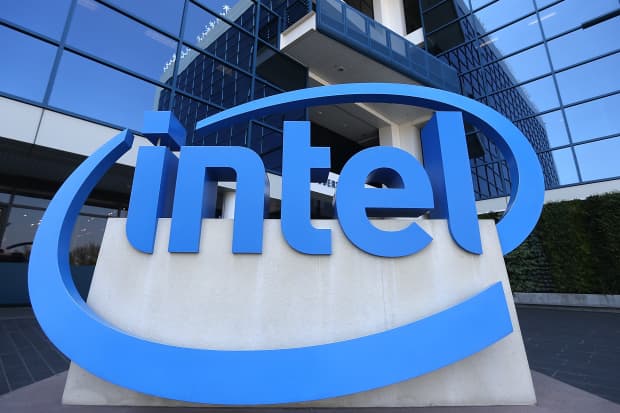This post was originally published on this site
A previous version of this report listed an incorrect Wall Street revenue consensus estimate. It has been corrected.

Intel Corp. reported third-quarter earnings Thursday afternoon.
Getty Images
Intel Corp. data-center sales sank more than expected in the third quarter, sending shares down 10% in after-hours trading Thursday.
Intel INTC, +0.74% reported a decline in profit and revenue from the previous year, while slightly raising its full-year forecast but missing expectations for its fourth-quarter sales outlook. Shares dropped to less than $49 in after-hours action immediately following the report, after closing the regular session with a 0.8% gain at $53.90.
The chip maker reported third-quarter net income of $4.3 billion, or $1.02 a share, down more than 28% from $5.99 billion, or $1.35 a share, in the year-ago period. After adjusting for restructuring and acquisition-related costs, Intel reported earnings of $1.11 a share, compared with $1.42 a share in the year-ago quarter. Revenue fell to $18.3 billion from $19.19 billion in the year-ago quarter.
Analysts surveyed by FactSet had estimated adjusted earnings of $1.11 a share on revenue of $18.24 billion, while Intel had forecast adjusted earnings of $1.10 a share on revenue of approximately $18.2 billion.
The company said that it now expects adjusted earnings of $4.90 a share on sales of $75.3 billion, after previously stating $4.85 a share on sales of $75 billion.
“Our teams delivered solid third-quarter results that exceeded our expectations despite pandemic-related impacts in significant portions of the business,” Chief Executive Bob Swan said in a statement. “Nine months into 2020, we’re forecasting growth and another record year, even as we manage through massive demand shifts and economic uncertainty.”
In Intel’s previous earnings report the company announced that it was delaying its next generation 7-nanometer chips until at least late 2022, a chip architecture that was already released by smaller rival Advanced Micro Devices Inc. AMD, +0.27% earlier in the year. While falling behind AMD in process, the chip maker has also seen Nvidia Corp. NVDA, -1.21% move ahead of it in market capitalization, as the graphics-chip specialist makes a play for ARM Holdings PLC that could make it more of a full competitor to Intel.
For more: How did Intel lose its Silicon Valley crown?
Intel’s data-center group, which is being challenged by AMD’s efforts in servers, saw revenue decline 7% to $5.9 billion, while analysts expected $6.21 billion. Intel’s largest segment — client-computing, the traditional PC group — rose 1% to $9.8 billion amid a surge in PC demand, with analysts expecting $9.09 billion.
Intel reported that nonvolatile memory solutions revenue fell 11% to $1.2 billion, while Wall Street expected $1.5 billion. Earlier in the week, Intel said that it was selling its flash-memory, or NAND, business to Korean chip maker SK Hynix Inc. for $9 billion.
“Internet of Things,” or IoT, revenue fell 33% to $677 million, compared with an expected $788.8 million. Mobileye revenue rose 2% to $234 million, while the Street had expected $158.5 million.
For the fourth quarter, Intel forecast revenue of $17.4 billion and adjusted earnings of $1.10 a share. Analysts on average expect fourth-quarter adjusted earnings of $1.07 a share and revenue of $18.24 billion.
For the year, Intel shares are down about 10%, while the Dow Jones Industrial Average DJIA, +0.54% — which counts Intel as a component — is down 1%, the S&P 500 index SPX, +0.52% is up 7%, and the tech-heavy Nasdaq Composite Index COMP, +0.18% is up 28%.

